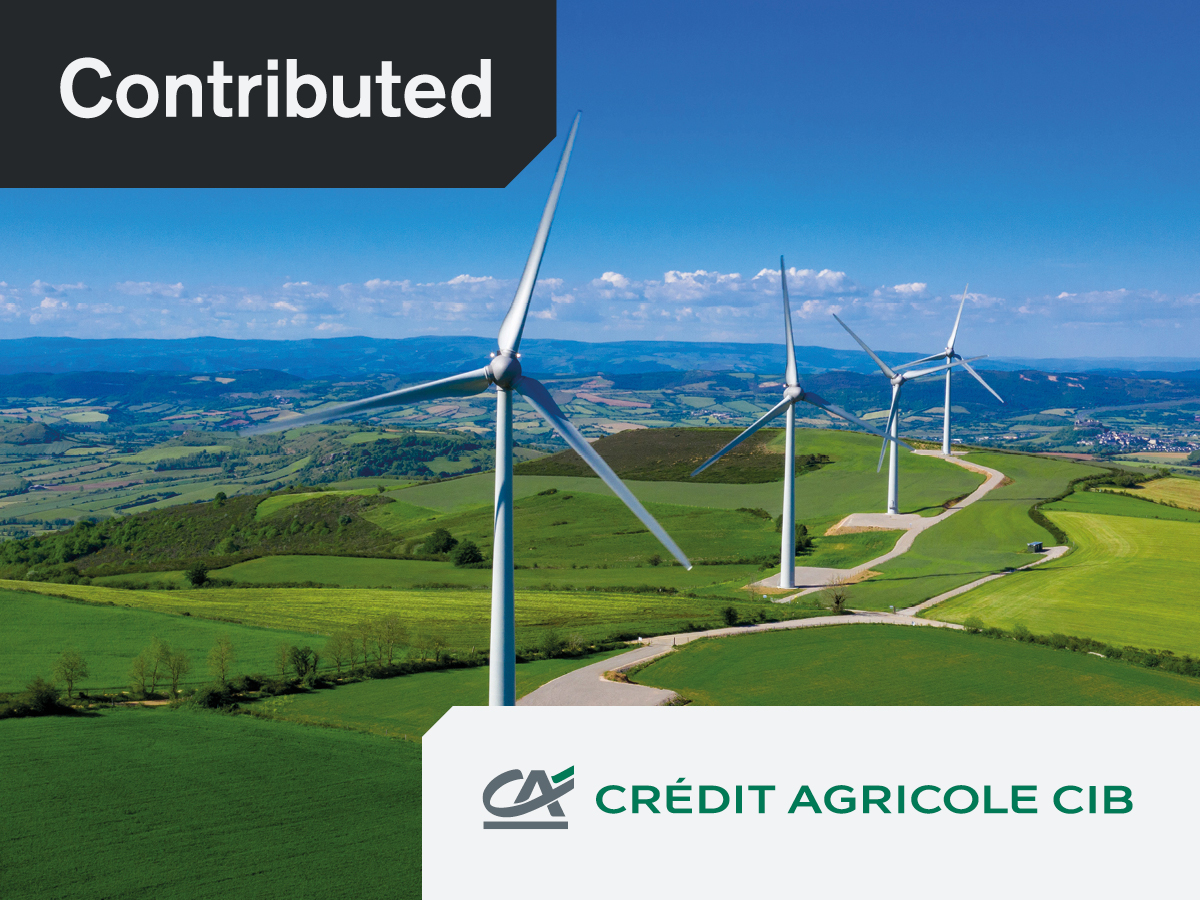Julien Tizorin, head of power & new energy coverage for North America, and Ugur Bitiren, global head of cash flow advisory at Crédit Agricole CIB, share their views on how cash flow pressures, coupled with the macro-economic environment, are driving firms globally to optimise their cash flows to fund the energy transition.
Renewable energy capital expenditure (capex) has been on the rise globally, with further increases forecasted into 2028 (see fig. 1). However, higher rates coupled with elevated leverage levels from historically high borrowing have compounded the cash flow pressures affecting the economics of renewable energy projects from both an outflow and inflow perspective. The sheer size of the cash outflow related to capex necessitates large sums of upfront capital.
Supply chain constraints and imperfect logistics networks, especially those around new technologies, have lengthened the time to operation of many of these projects. In addition, the slower cash inflow cycle of renewable assets has increased the discounted payback period of some of these projects relative to the more traditional energy installations.
Regional variations in renewable capex investment
Government subsidies and traditional sources of capital, such as equity and project finance debt, have met the bulk of the financing needs for renewable capex. However, there have been some differences geographically in the degree to which investments are made relative to operating cash flow. For example, US and Chinese power and utility (P&U) firms, unlike their European peers, have been investing beyond their operating cash flow generation capacity for years (see fig. 2).
Many reasons explain this disparity, notably government initiatives, such as the Inflation Reduction Act in the United States and China’s Five-Year Plan on Renewable Energy Development. The maturity of the project finance market in the US has also been a key contributor. Meanwhile, the European Union’s renewables policy strategy has had a more fragmented approach from the various member states.
Nonetheless, recent cash flow pressures have made relying solely on traditional sources of capital insufficient for the viability of some renewable projects. As a result, major firms globally have sought to optimise project cash outflows and inflows, improving the economics of their investments.
Cash outflow challenges and solutions
Many companies have sought to complement the tenets of their capital structure with other solutions such as capex payables financing. Crédit Agricole CIB, combining its expertise in sustainable banking and international trade and transaction banking, has been at the forefront of many of these transactions, financing billions of purchases annually for new renewable energy installations.
One advantage of capex payables financing is that it can reduce the operational cash flow gap that exists during the construction of new renewables installations by deferring capex cash outflow. Some clients have shared that, on average, 40% of development costs for a new renewables asset occur before project finance is even injected. In fact, many have used a portion of such project finance proceeds to repay their obligations under these capex payables facilities. The capital structure of the project entities (such as a variable interest entity) is then optimised once the asset begins to generate cash flow.
Supplier credit has also been used as a tool to defer cash outflow for P&U firms. Some major suppliers, such as wind turbine, solar panel and battery energy storage system manufacturers, have started to offer longer payment terms. Many have done this to secure backlog and gain market share in the new interest rates environment. Although some of these suppliers have funded these extended terms on balance sheet, others have been incapable due to their own cash flow needs. Crédit Agricole CIB has set up many seller-led receivables and milestone financing transactions, allowing for extended payment terms to be financed. In essence, the incremental receivables are discounted to ensure cash flow remains at an adequate level for the capex supplier, while allowing P&U firms to defer their cash outflows. These financing solutions have also been implemented for EPC contractors building installations themselves.
Furthermore, the development of untied financing solutions by export credit agencies (ECAs) has played a key role in financing the energy transition. Some of these tools support P&U/developers by bundling several projects under a single financing structure. Other solutions have been designed to alleviate supply chain constraints and secure supply of strategic materials. These types of tools allow companies to enhance debt capacity thanks to an ECA cover, complementing traditional sources of capital and optimisation solutions.
Decommissioning bonds and letters of credit are tools that have also been used to optimise cash outflow. After the facilities are at the end of their life, asset owners must have them decommissioned and bring the environment back to the condition it was prior to use. These instruments are used to cover these costs in the event of default and typically substitute a deposit required by regulators, unlocking cash. The sheer size of the renewable assets developed and their associated decommissioning costs mean that significant sums of capital would be tied up without these instruments.
Cash inflow challenges and solutions
Regarding cash inflows, the monetisation of energy certificates and power purchase agreement (PPA) receivables financing are tools that have been employed by players in the market. Their main purpose is to counter the slow cash inflow profile of some of these projects. The monetisation of legacy business flows, such as retail market receivables, has also been used by more diversified groups. The cash inflows are not destined towards mature areas of the business, but rather to fund the financing needs of the group’s newer renewable activities.
Cash management solutions have also been a tool to accelerate cash inflow at the consolidated levels. The various locations of renewable energy assets multiply the number of geographies and jurisdictions where a group holds cash. Cash pooling of deposits from multiple project entities has been implemented by large groups to accelerate the operational speed at which cash is aggregated back to the parent level once the assets are operational. Trapped cash solutions have also been used for projects that are in jurisdictions with currency controls or other regulations, accelerating cash repatriation.
Conclusion
Renewable energy capital expenditure has seen a massive uptick in the past few years and will need to continue to meet global energy transition objectives. However, corporates face cash flow pressures in terms of both outflow and inflow, affecting the efficiency of this transition. Companies have sought to counter these pressures with complementary financing tools, increasing the efficiency and economic viability of their investments. Leveraging the combined expertise of various divisions, Crédit Agricole CIB has arranged many transactions for corporates in this space, contributing positively to funding the energy transition.










